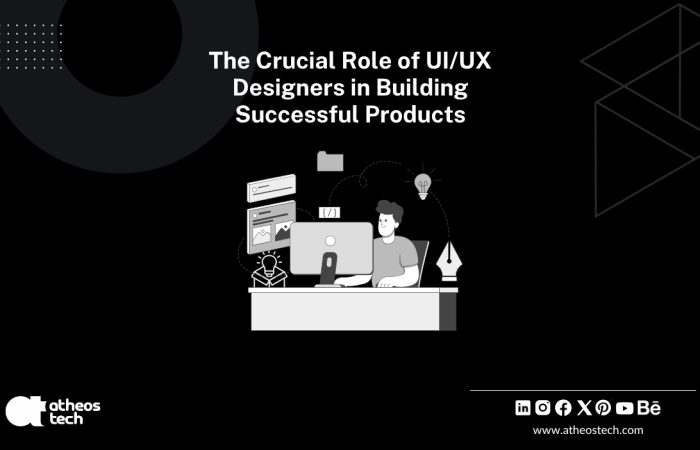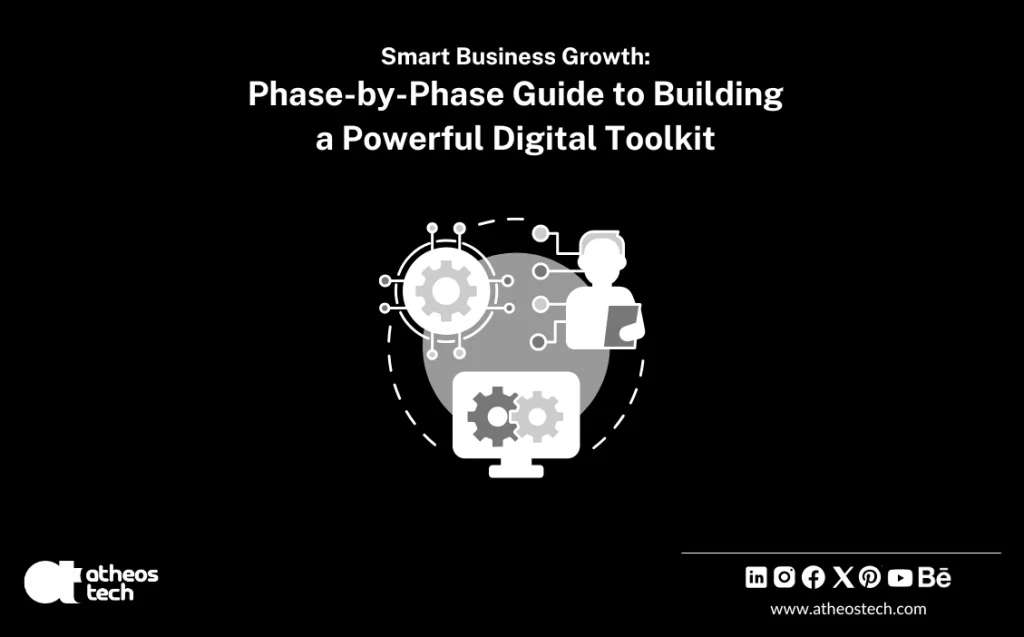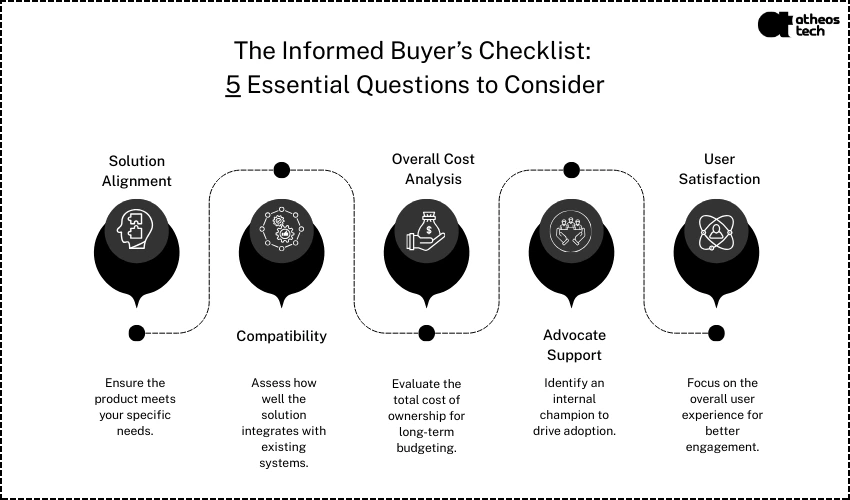
Hire UI UX Designer to Transform Your Brand Across Every Digital Channel

In our 3 Digital Phases guide, you identified your current stage in the transformation journey. Now comes the inevitable and most common question we hear: “Okay, so what software should I actually buy?”
This is where most SMBs make their first costly mistake.
SMBs chase tools based on hype, not need. And what does that get you? A bloated tech stack. Disconnected systems. Teams stuck toggling between five tabs to complete one task.
This is what we call “the stack trap” – buying tools in a vacuum, without anchoring them to business maturity or process clarity. A shiny tool deployed at the wrong phase doesn’t just waste money – it actively creates friction.
The Smarter Way: Strategy First, Stack Second
You’ve seen our 3 Digital Phases framework. You’ve mapped your current stage.
Now comes the inevitable question:
“Okay, so what software should I actually be using?”
This is the very guide. This guide is your strategic toolkit for choosing the right small business IT solutions. It’s not a shopping list.
Before we dive into tech stacks, platforms, or buzzword bingo, let’s establish a first principle:
Digital transformation doesn’t happen in a vacuum, it happens across two distinct but inseparable arenas.
One faces the world. The other powers the engine room.
And ignoring either one? That’s not just risky – it’s fatal.
The Core Concept:
Frontend is how you make promises.
Backend is how you keep them.
Or to put it differently:
Frontend is your digital storefront; where customer impressions are made, demand is captured, and your brand is lived.
Backend is your digital factory; where operations, processes, and fulfillment happen at scale.
Your website, mobile app, email campaigns, marketing automation, social media, customer portals, chat interfaces, and anything else that speaks to the customer.
It exists:
Core focus:
Frontend tools typically lead in Phase 1 and Phase 2 of transformation. This is where many SMBs start, because it’s visible, flashy, and feels like progress.
But here’s the cat
ERP systems, CRM, inventory management, finance and accounting tools, HR systems, internal communication platforms, and process automation tools.
Your backend – the true engine behind your small business IT solutions ensures you can scale with integrity. Its strategic role is to deliver on the promises made upfront – efficiently, accurately, and at scale.
Core focus:
Backend transformation becomes essential in Phase 2 and is non-negotiable in Phase 3. This is where SMBs either scale or stall.
As a small business consultant, we can tell you: polishing your digital storefront without fixing the backend is a fast track to failure.
Here are some cases why digital transformation never happens for most SMBs:
Strategic Goal: Stop the chaos. Get out of inboxes, spreadsheets, and memory-driven operations. Create a centralized, trackable system for your day-to-day.
| Phase | Strategic Goal | Mindset |
|---|---|---|
| Phase 1: Management | Get control and clarity | “What’s going on in my business?” |
| Phase 2: Planning | Design for scale | “How do we operate smarter and more consistently?” |
| Phase 3: Automation | Scale intelligently | “How can we scale without chaos or overhiring?” |
These aren’t just labels. They’re strategic checkpoints, and each requires a radically different approach to technology. What works in Phase 3 will collapse your workflows in Phase 1. What feels right in Phase 1 will become a bottleneck in Phase 3.
These are the checkpoints every small business consultant worth hiring should start with. At AtheosTech, we don’t just recommend tools – we align them to where your business is now, and where it’s headed.
Unlock the right small business IT solutions & start building your digital toolkit today
“You don’t need more tools. You need the right ones for where you are.”
Each phase of your digital transformation demands a different set of tools; not because tech has changed, but because your business priorities have.
Here’s your diagnostic-aligned, phase-by-phase toolkit – complete with strategies, tools, warnings, and how to know when you’re ready to move up.
Strategic Goal: Stop the chaos. Get out of inboxes, spreadsheets, and memory-driven operations. Create a centralized, trackable system for your day-to-day.
Core Tool Categories & Strategic Examples:
| Category | Purpose | Examples |
|---|---|---|
| Team Communication | Escape email/WhatsApp chaos | Slack, Microsoft Teams |
| Document Management | End version confusion | Google Workspace, Microsoft 365 |
| CRM (Basic) | Centralize customer data | HubSpot Free, Zoho CRM Free |
| Finance & Accounting | Gain visibility into cash flow | QuickBooks Online, Xero, Zoho Books |
| Task/Team Management | Track and assign work clearly | Trello, Asana (Basic), ClickUp (Basic) |
Tactics for Success:
Consultant’s PoV:
As a small business consultant, our advice is simple: Don’t overbuy. Phase 1 isn’t about power; it’s about clarity and consistency. The tool your team will actually use every day is 10x more valuable than a ‘best-in-class’ platform collecting digital dust.
You’re Ready for Phase 2 When:
Strategic Goal: Systematize your workflows. Create predictable execution. Use real-time data to drive smarter decisions.
Core Tool Categories & Strategic Examples:
| Category | Purpose | Examples |
|---|---|---|
| Project & Workflow Management | Standardize execution | ClickUp, Asana (Business), Monday.com |
| Process Documentation | Define repeatable systems | Notion, Scribe, Loom |
| CRM (Sales Enablement) | Manage leads + revenue pipelines | HubSpot Sales, Pipedrive, Salesforce Essentials |
| Business Intelligence | Visualize data insights | Power BI, Google Data Studio, Zoho Analytics |
| Integration Layer | Connect tools without code | Zapier, Make (Integromat), Pabbly Connect |
| Financial Forecasting | Model cashflow & what-if scenarios | Fathom, Float |
Tactics for Success:
Consultant’s PoV:
This is a core principle of our consulting services for small business: Better tools don’t equal better operations. Document first. Then digitize. The worst thing you can do is try to automate chaos.
You’re Ready for Phase 3 When:
Strategic Goal: Delegate repetitive tasks to machines. Connect systems, reduce friction, and scale without over hiring.
Core Tool Categories & Strategic Examples:
| Category | Purpose | Examples |
|---|---|---|
| Automation Platforms | Automate data flow + task triggers | Zapier, Make, Pabbly Connect |
| APIs & RPA | Deep backend automation | Custom APIs, Power Automate, UiPath |
| Marketing Automation | Nurture customers automatically | HubSpot Marketing Hub, ActiveCampaign, Keap |
| Smart CRM Workflows | Triggered actions & logic-based flows | Zoho CRM Blueprints, HubSpot Workflows |
| AI Assistants | Augment teams, not replace them | ChatGPT for Teams, Jasper, internal AI features |
Tactics for Success:
Consultant’s POV:
This is the hard truth all good small business consulting firms will tell you: If you haven’t cleaned your data in Phase 1 and standardized your workflows in Phase 2, AI won’t save you. It’ll just accelerate your dysfunction.
You’ve Hit Transformation Mode When:
“Buying a tool without a decision filter is like hiring an employee without an interview.”
Let’s get one thing straight – a good tool bought for the wrong reason is still a bad investment.
Before you hit “Subscribe” on that shiny new platform, run it through this 5-question decision filter. It’s your insurance policy against wasted spend, internal resistance, and “shelfware” (i.e., tools no one uses after onboarding).

“Does this directly solve a documented business problem?”
If this tool doesn’t map back to a pain point in your strategic plan, stop right there.
“Nice to have” is not a good enough reason to spend money.
Integration Capability
“Will it work with our current systems and workflows?”
A tool that can’t plug into your CRM, accounting system, or task manager creates more work, not less.
Disconnected tools don’t scale. They stall.
“What’s the full cost, time, training, and adoption included?”
That $29/month plan? Cute. But if you need a consultant to implement it and 20 hours of internal training… you’re looking at a much higher figure.
Budget for the real cost – not just the subscription.
“Who on your team owns this tool’s success?”
Every tool needs a driver – a person who ensures it gets implemented, adopted, and optimized. Without that, the tool fails.
If everyone owns it, no one does.
“Will our team actually want to use it?”
If it’s clunky, confusing, or overcomplicated, your team will resist. Then you’re back to spreadsheets and frustration.
Usability beats features. Every. Time.
Most failed investments in small business IT solutions aren’t the fault of the software. They’re the fault of underestimating the Total Cost of Ownership (#3) and failing to assign a clear Internal Champion (#4). Get these two right, and you’ve solved 80% of the risk.
A long list of tools is not a strategy.
A tool is only as good as the problem it solves, the system it supports, and the people who use it.
Before you invest – pause, diagnose, and decide deliberately. That’s what separates the SMBs that scale smart… from the ones stuck in tech paralysis.
Turn your digital toolkit into a smart growth engine.
Let’s be crystal clear:
A mature digital toolkit isn’t a bloated one. It’s not about having more software, it’s about having the right systems, mapped to your current reality and your future growth.
The most powerful tool in your business isn’t on any “top 10” list.
It’s called strategic clarity.
Your toolkit is only as powerful as the plan behind it.
Don’t collect software. Build systems.
“Tools don’t solve problems. Clear thinking and designed processes do.”
Use this guide as your reference sheet – not your blueprint. Keep revisiting this question:
“Does our current stack still serve our strategy – or are we serving the stack?”
As a dedicated small business consulting company, we don’t sell software. We engineer transformation. If you’re feeling overwhelmed by the options, let’s turn this guide into a concrete roadmap for your business.
Our Digital Systems Audit is designed to cut through the noise. We’ll help you identify:
Book your complimentary Digital Stack Review today.
Adding {{itemName}} to cart
Added {{itemName}} to cart